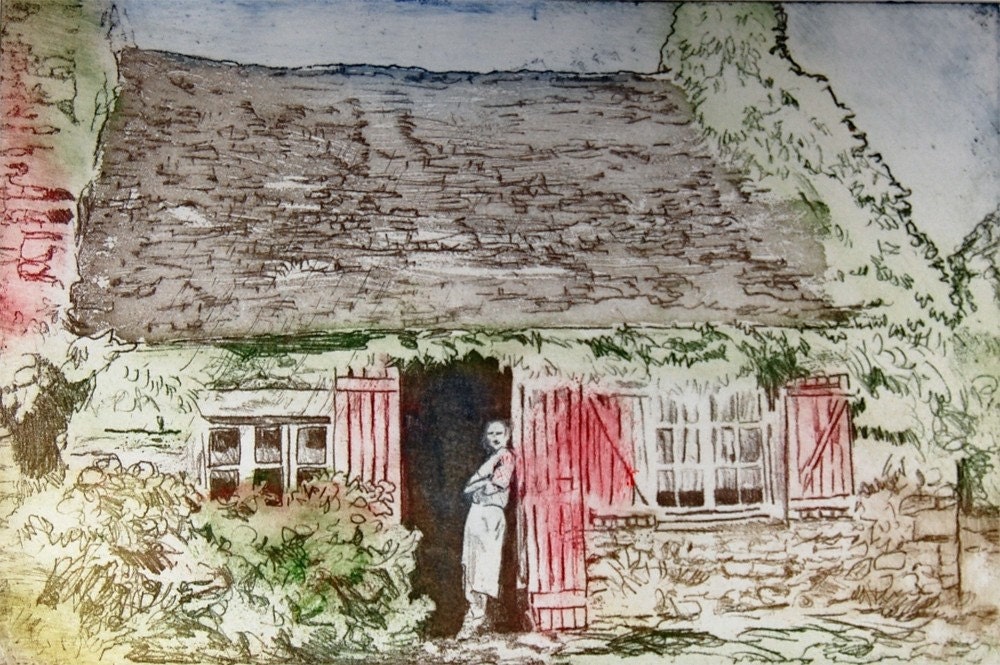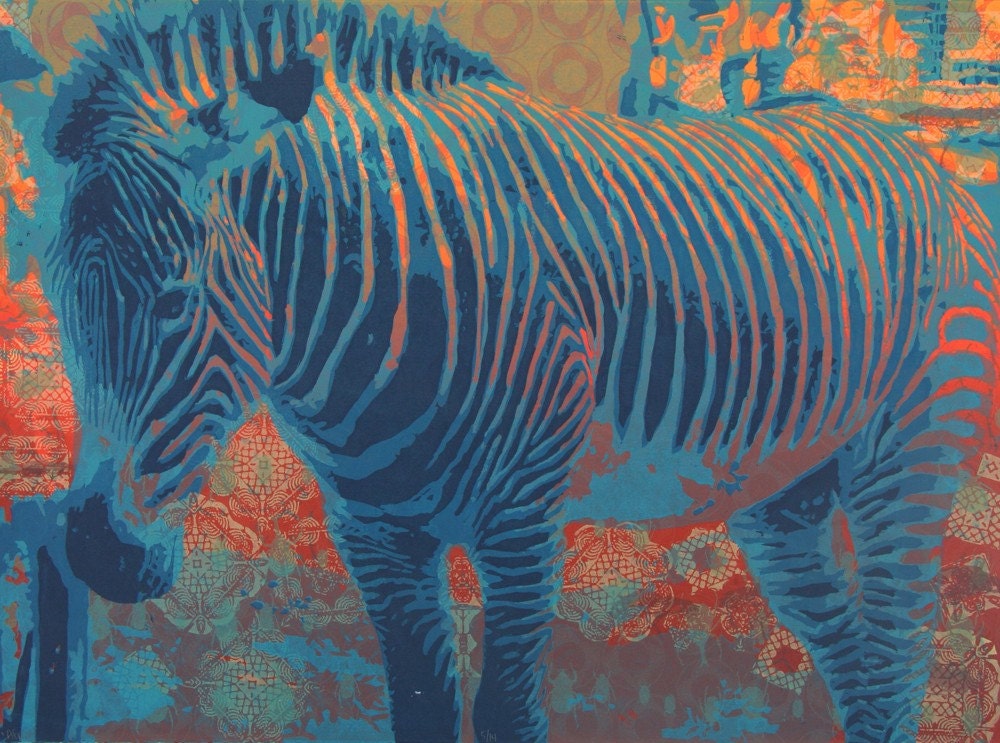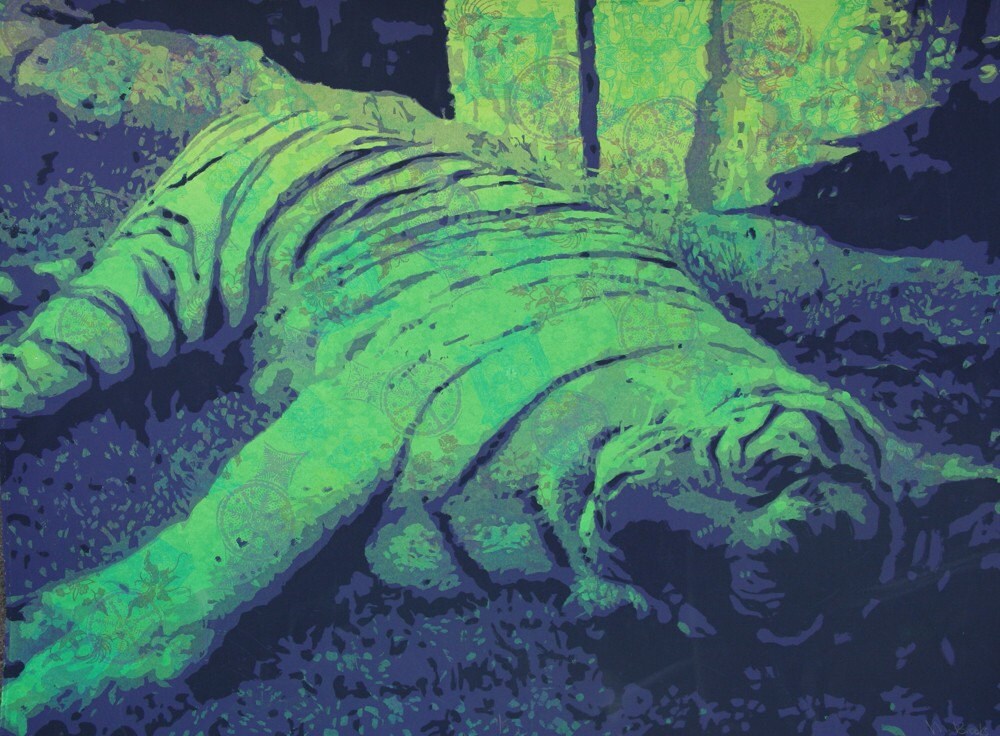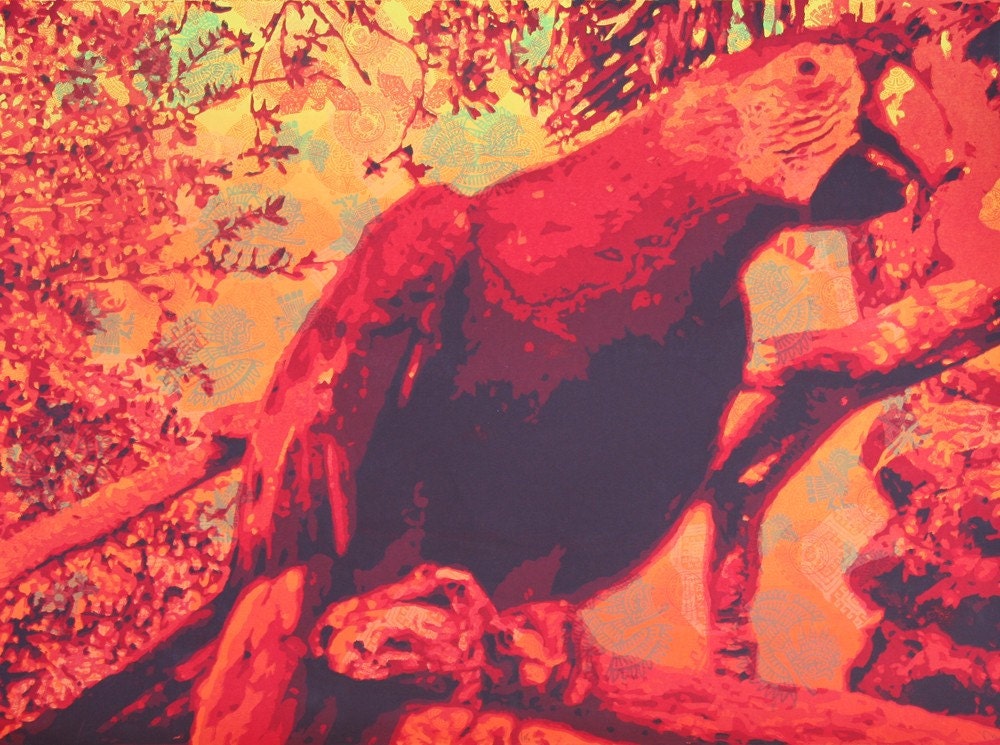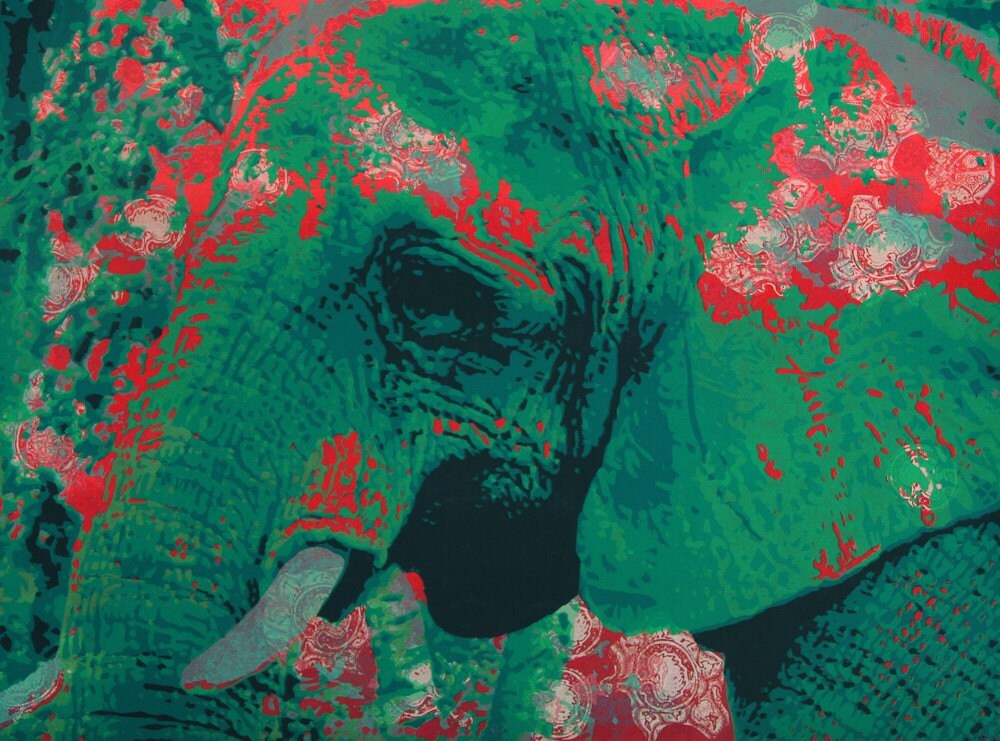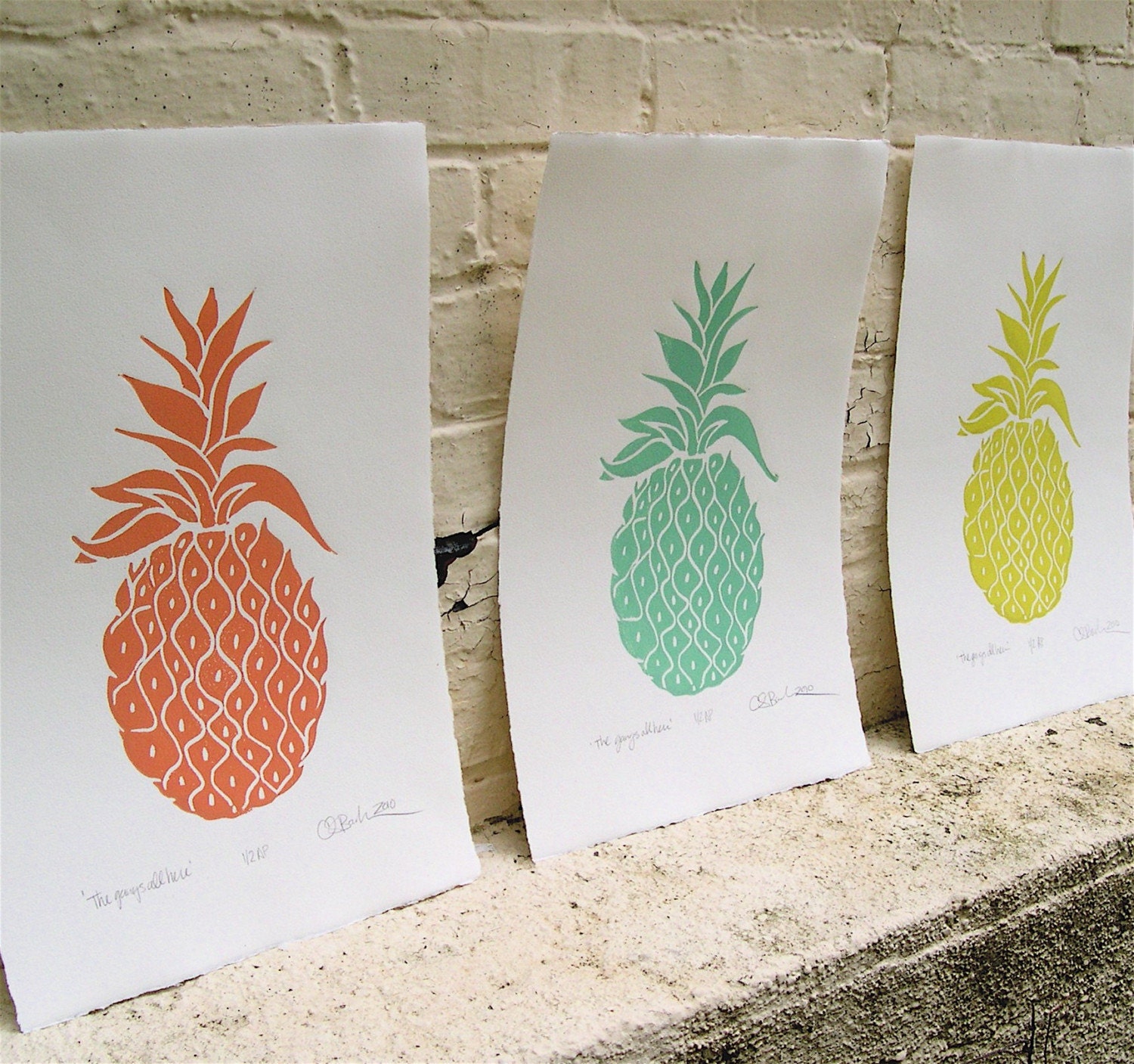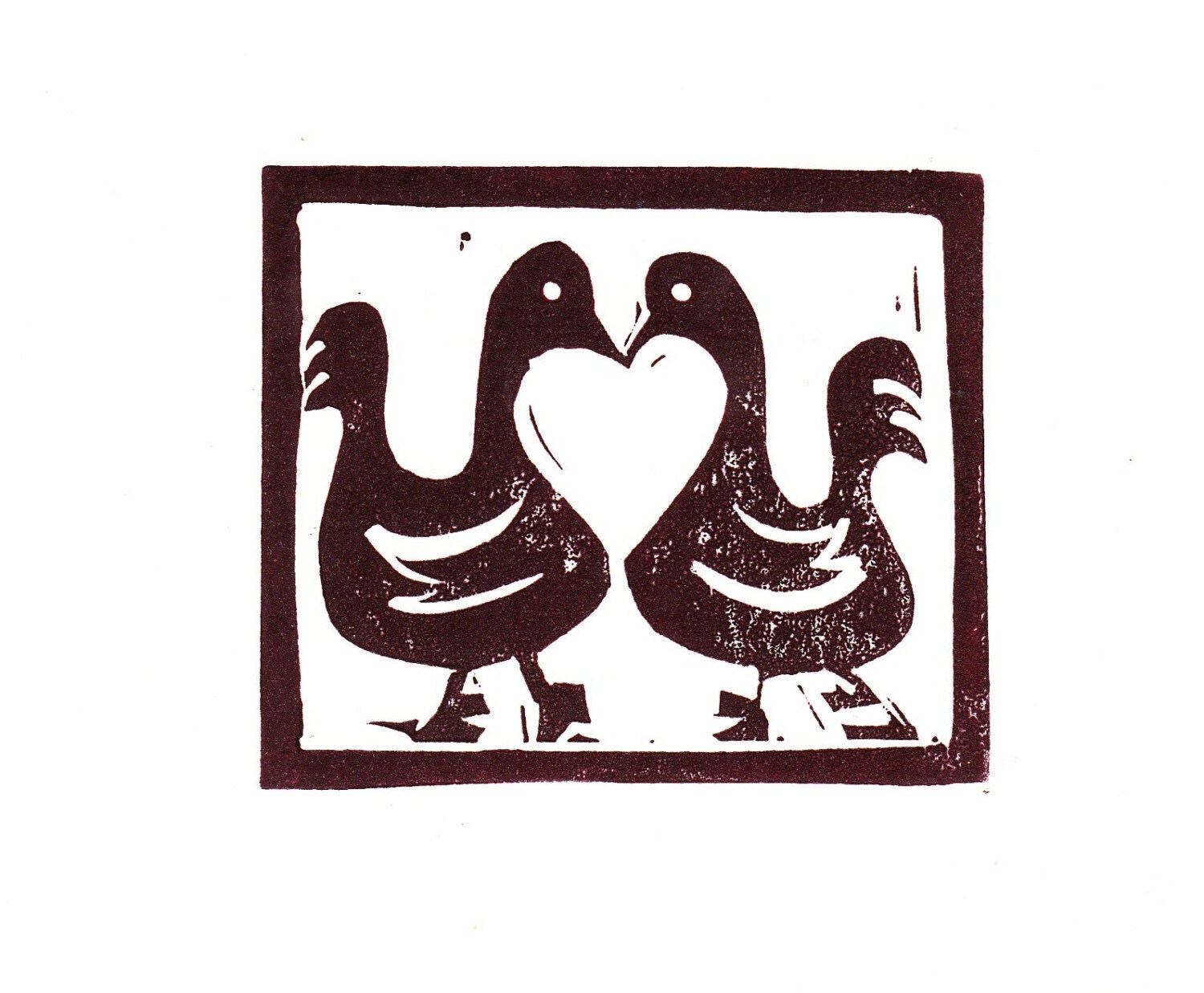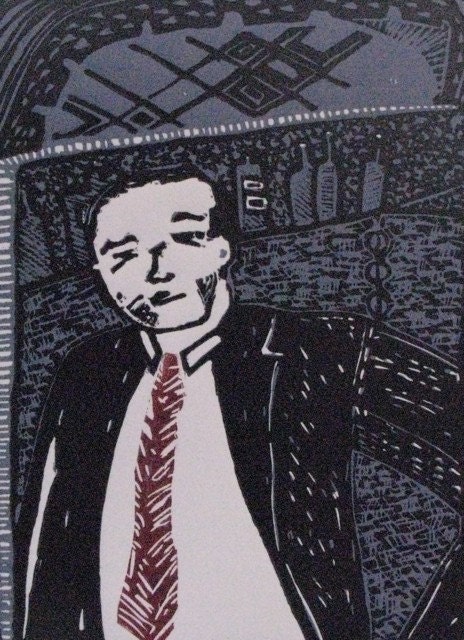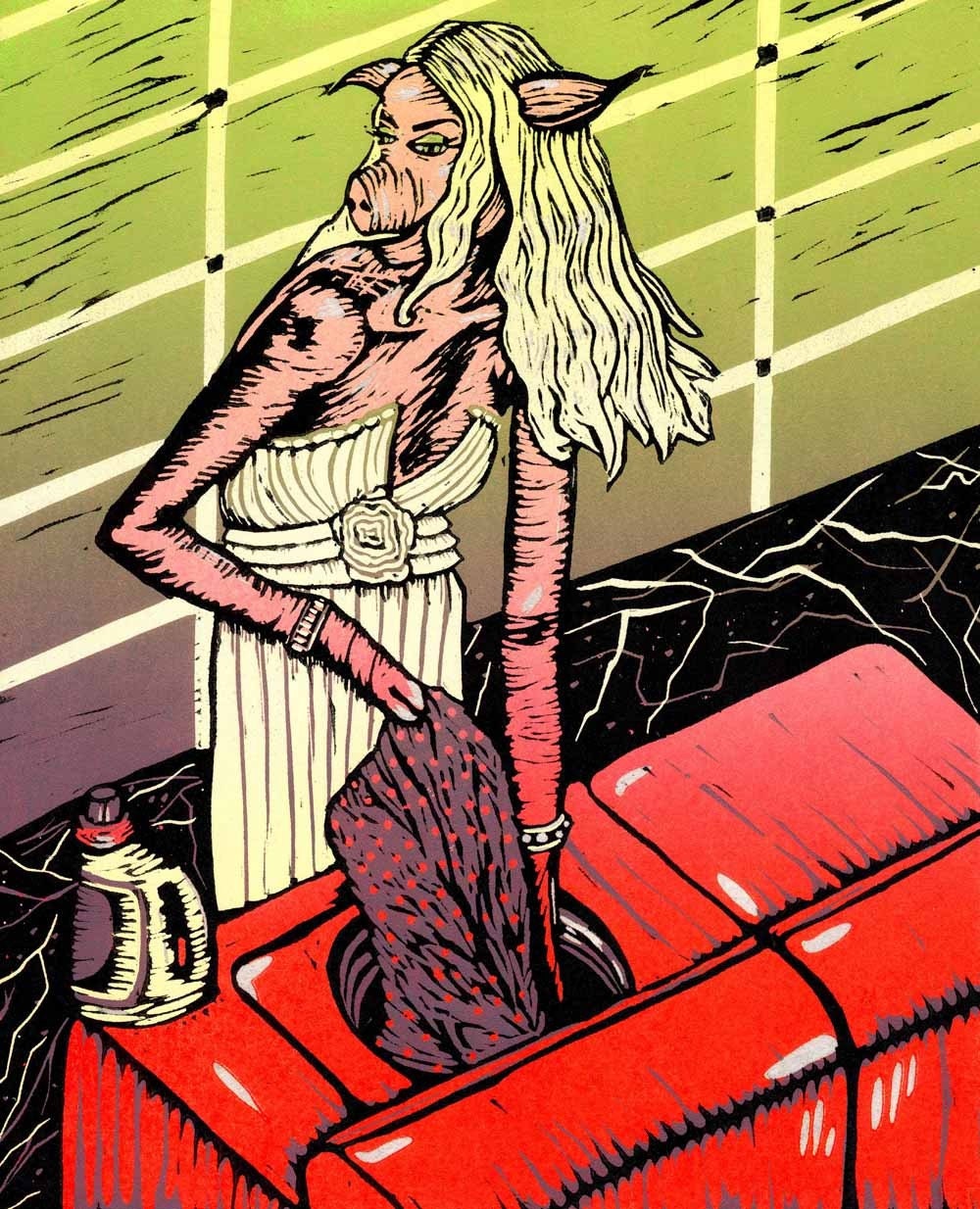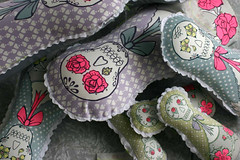 Name: Beside Herself, a collaboration between Toronto printmakers Alda Escareño and Carolyn Self
Name: Beside Herself, a collaboration between Toronto printmakers Alda Escareño and Carolyn SelfWebsite: www.besideherself.ca
Etsy: www.besideherself.etsy.com
Blog: www.beside-herself.blogspot.
Flickr: www.flickr.com/photos/beside-
Brief Bio
While we’ve both had artsy inclinations from a very young age, Beside Herself is really only a few months old. We met each other in university when we were studying fine art with a focus on print media. In that time we became familiar with each other’s work and working habits. We started working in collaboration once we graduated. Beside Herself wasn’t something that we really planned, but rather something that slowly evolved on it’s own.
How did you get started in printmaking?
Carolyn: I have three brothers and grew up in a small town, which means I had to entertain myself while growing up. Most of the time this meant working with my hands to make paper dolls and games to play with. I spent a lot of time on my own filling sketchbooks and sewing clothes. In high school I taught myself to screen-print so that I could print my own fabrics, and became obsessed with my new potential for making multiples of all kinds.
Alda: I was born in Mexico and I feel that a lot of my draw towards art and crafts comes from being surrounded by traditional Mexican crafts when I was young. I discovered printmaking for the first time when I discovered the Mexican-revolution time woodcuts of José Guadalupe Posada. Inspired by his day of the dead prints, I taught myself relief printing in high school. I haven’t stopped printing since.
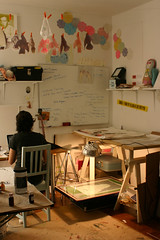
Describe where you work.
We work out of a tiny studio apartment that has been manipulated to meet our needs. Almost everything is done in this space including screen-printing. We store light sensitive screens in a linen closet, expose them with a hooded lamp under a worktable and wash them out with a garden hose in the bathtub. When we need a press we rely on public studios. We don’t have a lot at the moment, but we manage with what we have. While we do dream of the perfect studio set-up we are also motivated by the challenge to create large editions from limited means.
What's your favourite printmaking process?
It’s hard to pick a favourite… we’re working a lot with screen printing lately, but this has more to do with the set-up that we have in our studio and the flexibility it gives us for the work we want to make. We would really like to be able to do more relief and are working to get a press. For now, screen-printing definitely satisfys our creative impulses. We love that it lends itself to printing on nearly any surface: wood, fabric, paper, 3-d or 2-d. Screen-printing enables us to create almost any image or object. Everything can be printed.
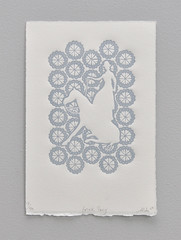
What's your creative process for any given print? (eg. sketch first? Pre-planned or free-form?)
Our creative process begins with an idea. One of us will come up with something and throw it out for discussion. If the idea passes this test, we scribble it on a big white board on one of our studio walls and continue talking about it until we have time to begin a new project. Through discussions, the initial idea is molded into something mutual. Once we have a clear understanding of what our idea is, we move into an exploration of materials and the more practical brainstorming of logistics. From here things can go in different directions.

Both of us are capable to doing all aspects of the work we make so pieces develop intuitively. People always ask us what each of us contribute to a given work. I think it is safe to say that we feel like equal parents to all of our pieces even when one person's hands have touched it more than the other's.
What do you enjoy most about printmaking?
The multiples. There’s something incredibly satisfying about having a finished stack of prints you’ve been working on for a while. We usually find ourselves literally surrounded when we are waiting for a big edition to dry. It’s pretty magical.
What's your least favorite part of the process?
Printmaking has its challenges, but even those seem to stand in harmony with the overall process. As we’ve moved towards creating larger editions more frequently, however, we feel a little set back without the right equipment. Printmaking requires a lot of big expensive equipment.
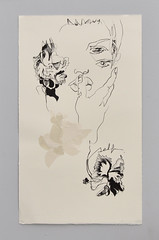
What are your inspirations (other artists, people, places, events, etc.)?
We’re inspired by a lot of things… here’s a few.
Paper, printed ephemera, handcrafting traditions, fashion, interior and industrial design, packaging and merchandising, dancing, mass production, innovative installation, material potential, simulacra, diy, music, mortality, humor and more.
How has your work changed and evolved since you started?
We haven’t been at if for that long, but we feel that as we spend more time on Beside Herself we tend to incorporate a thoughtful consideration of how we hope to sell the work we make (where? To whom? etc.). We would love to be able to do this for a living and this requires some business considerations. This is all new to us.
How do you get past creative slumps?
It helps to be working with someone else to avoid any real slumps. We bounce ideas off each other constantly. Even if the ideas start off really bad, they do eventually become something good just through talking about them and exploring them.
How do you promote your work?
At the moment, we’re using the powers of the internet (website, etsy, blogspot, facebook etc.) and our own networking. It’s not much, but we haven’t gotten to the point where we can think about advertizing or anything like that.
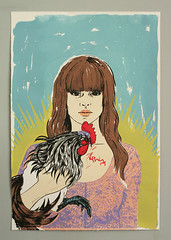
Any other comments or advice for others who want to try making hand-pulled prints?
So often we have to explain what printmaking is, that we actually get giddy with excitement when we talk to someone who knows what it is and is interested in trying it out. If someone out there is curious about printmaking, they should look-up a local workshop which will provide all the basics in a given technique. When it comes time to setting up at home, look around the internet for guides on home studios or ask a print artist who is farther along.





